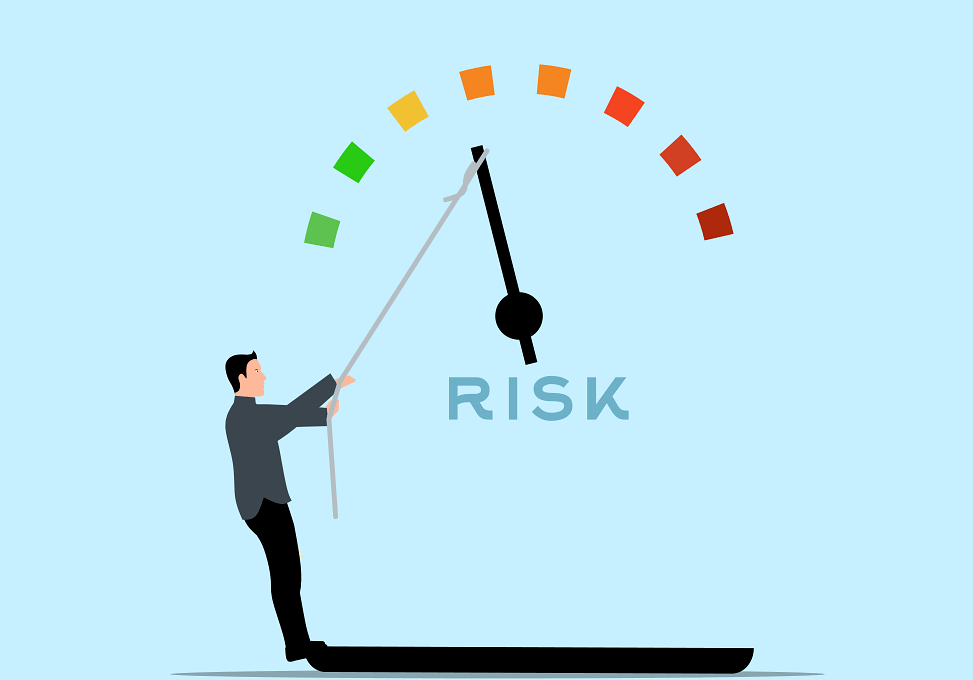Risk Management Disclosures: Understanding Our Approach
In the current financial landscape, effective risk management is crucial for ensuring corporate resilience and long-term sustainability. Financial reporting provides transparency, enabling investors to assess how well companies anticipate and mitigate risks. Our robust approach to risk management is centered on identifying, evaluating, and addressing potential risks that could impact our operations and financial performance. We continuously monitor both market dynamics and regulatory changes to adapt our strategies accordingly. In our risk management framework, we prioritize the integration of risk identification into our overall business strategy. We employ quantitative and qualitative assessments to gauge the potential impact of these risks. Our risk management framework is designed to not only safeguard our business but also enhance investor confidence, driving sustained organizational growth. A proactive stance towards risk enables us to maintain objective assessments based on solid data and relevant insights. This level of preparedness allows us to react swiftly to unforeseen circumstances, thus preserving our stakeholders’ interests. Engaging with industry standards further enhances our risk management processes and strengthens our commitment to transparency.}
Risk assessment in financial reporting involves several stages that collectively help organizations understand the complexities they face. We categorize risks into strategic, operational, financial, and compliance-related challenges, ensuring comprehensive coverage across all sectors. Our detailed methodologies encompass ongoing monitoring, risk analysis, and actionable reporting. Through established frameworks and guidelines, we ensure our identification and evaluation processes align with industry best practices. Importantly, we emphasize the significance of stakeholder engagement, as their insights guide our approach. We continuously adapt our risk management strategies considering feedback from various stakeholders, including investors and regulatory bodies. This inclusive approach encourages open communication, fostering trust and collaboration. By adopting advanced technologies and analytical tools, we enhance our decision-making capabilities. Data analytics allows us to spot emerging risks proactively, ensuring timely responses to potential threats. Our investment in risk management reflects our commitment to long-term viability, promoting a culture that prioritizes sustainability. As we advance in our journey, we remain dedicated to refining our practices, ensuring they evolve with changing market conditions. Finally, it is our responsibility to provide transparent risk disclosures, thereby empowering our investors to derive meaningful insights.
Comprehensive Risk Strategies
Our comprehensive risk management strategies encompass a multifaceted approach aimed at mitigating different forms of risk. We understand that various factors can influence market dynamics, necessitating a broad toolkit to address potential challenges effectively. Among the risks we account for are credit risk, operational risk, market fluctuations, and regulatory compliance challenges. Each of these elements is subject to rigorous assessment methodologies that allow us to develop targeted responses. Our internal governance structure plays a vital role in ensuring accountability throughout the risk management process. By establishing clear roles and responsibilities, we enhance our ability to manage risk effectively while preserving stakeholder value. Our risk committee meets regularly to review existing strategies, track performance indicators, and ensure alignment with our strategic objectives. Furthermore, we prioritize training and development for our team members, fostering a culture of awareness around risk management. By equipping our employees with the necessary tools and knowledge, we empower them to identify and escalate potential risks promptly. Continuous improvement is also a crucial component of our strategy; we learn from historical data to refine our methodologies and enhance our resilience to future challenges.
Effective risk disclosures are integral to maintaining investor trust and fostering transparency in financial reporting. We strive for clarity in our communications, ensuring that our stakeholders receive up-to-date information regarding our risk management practices. These disclosures are embedded within our Annual Reports, making essential findings accessible to our investors. By utilizing both qualitative and quantitative metrics, we provide a holistic view of our organization’s risk landscape. Our commitment to transparency also extends to regulatory compliance, where we adhere to legal guidelines that stipulate specific disclosures. This commitment ensures that our stakeholders can confidently evaluate our financial standing. In addition to standard disclosures, we actively engage with our investors, providing them with opportunities to discuss their concerns. Regular updates, investor presentations, and one-on-one meetings facilitate open dialogue, promoting a deeper understanding of our approach to risk management. We aim to bridge any information gaps while reinforcing our organizational transparency. Furthermore, our emphasis on corporate governance aligns closely with our risk disclosure practices. By establishing standardized reporting frameworks, we create a consistent and coherent communication channel for our stakeholders, showcasing our dedication to transparency.
Risk Management Metrics
Our risk management metrics are crucial indicators that guide our strategic decisions. We employ various parameters to measure risk exposure, including Value at Risk (VaR), stress testing, and key risk indicators (KRIs). Each of these metrics serves a distinct purpose in assessing our financial vulnerabilities and potential impacts. By utilizing these measurements, we can make informed predictions and prepare for various market scenarios. Regular evaluation of these metrics ensures our risk management processes remain effective and up-to-date. Additionally, we benchmark our performance against industry standards to identify areas for improvement. By understanding our position relative to peers, we can enhance our practices further. The use of predictive analytics coupled with these metrics allows us to anticipate risks more efficiently. We continually analyze trends in our operational data, looking for correlations that inform our future strategies. This iterative approach to risk management fosters adaptability. Finally, informing our investors about these relevant metrics encourages a shared understanding of our risk profile, ultimately enhancing their confidence in our operations. We value and understand the need for our stakeholders to have access to concrete, relevant data that drives decision-making.
With the ever-evolving financial landscape, agility is paramount in risk management. We adopt an assertive approach, allowing us to pivot quickly in response to emerging threats. This agility stems from a comprehensive understanding of our risk environment. Regular scenario planning exercises bolster our foresight, enabling us to envisage possible future challenges. By preparing for various situations, we enhance our organization’s overall resilience, strengthening our capacity to respond effectively. Additionally, we emphasize proactive communication with our stakeholders, ensuring they remain informed of significant developments. Transparent communication fosters strong relationships and aligns stakeholder expectations with our organizational objectives. Training sessions contribute to our agility, equipping our teams with the skills to react promptly to evolving risks. We continuously invest in new technologies, incorporating innovative risk management tools to streamline our processes. The incorporation of automation reduces our operational burdens, allowing our teams to focus on strategic decision-making. Our culture of innovation encourages exploring new methodologies that contribute to our risk management effectiveness. Through this commitment to agility, we reaffirm our dedication to safeguarding stakeholder interests and ensuring long-term organizational sustainability.
Conclusion and Future Outlook
As we conclude our deep dive into risk management disclosures, it is evident that our approach is both robust and proactive. By consistently refining our strategies, we aim to navigate the complexities of today’s financial landscape effectively. Our commitment to transparency and accountability remains steadfast as we strive to communicate openly with our stakeholders. Looking ahead, we recognize that risk management will need to adapt to the evolving financial sector. Emerging technologies, regulatory changes, and market dynamics necessitate continual evolution in our risk strategies. We are committed to fostering a forward-thinking culture that not only anticipates risks but also seeks out new growth opportunities amid uncertainty. Continuous improvement, stakeholder engagement, and effective training will remain critical components of our future strategies. We also plan to enhance our digital reporting capabilities, ensuring that our disclosures remain readily accessible and informative. In conclusion, our rigorous approach to risk management enables us to better safeguard our organization and its stakeholders, inspiring confidence in our long-term trajectory. We are grateful for the support of our investors and dedicated to further enhancing our risk management practices for years to come.



